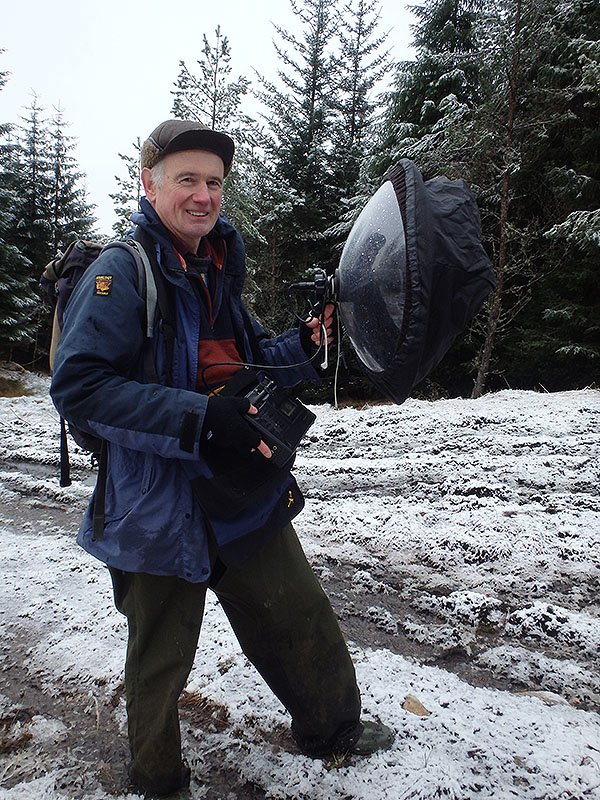Crossbill identification at Dundreggan Conservation Estate
Dr Ron Summers, Principal Conservation Scientist with the RSPB, visited Dundreggan to check the identity of our resident crossbills.
 There are 3 species of crossbills in Scotland that are very similar in appearance but can be told apart by their call. If you examine a crossbill call in “slow-motion” using a sonogram, the results allow you to identify the crossbills. Dr Summers pioneered this method of identification in the 1990s.
There are 3 species of crossbills in Scotland that are very similar in appearance but can be told apart by their call. If you examine a crossbill call in “slow-motion” using a sonogram, the results allow you to identify the crossbills. Dr Summers pioneered this method of identification in the 1990s.
As one of these species – the Scottish crossbill – is Britain’s only endemic bird (which means it is not found anywhere else in the world), we wanted to confirm the identity of the birds which we regularly see in the plantation at Dundreggan.
Dr Summers was able to confirm the calls made by our birds as “Type 1A” common crossbills. Common crossbills are found throughout Scotland, the UK and the rest of the northern hemisphere. Their amazing bills are specially adapted to extract the seeds of conifer trees from cones. Scottish crossbills are found only between Aberdeenshire and East Sutherland, preferring pine woodland habitat, particularly ancient Caledonian Pinewood fragments, including in Glen Affric.

